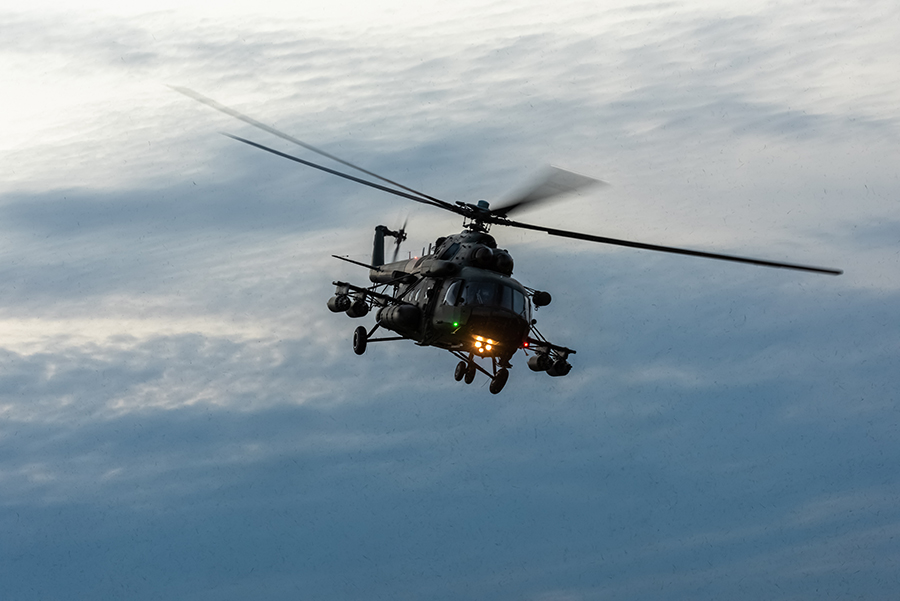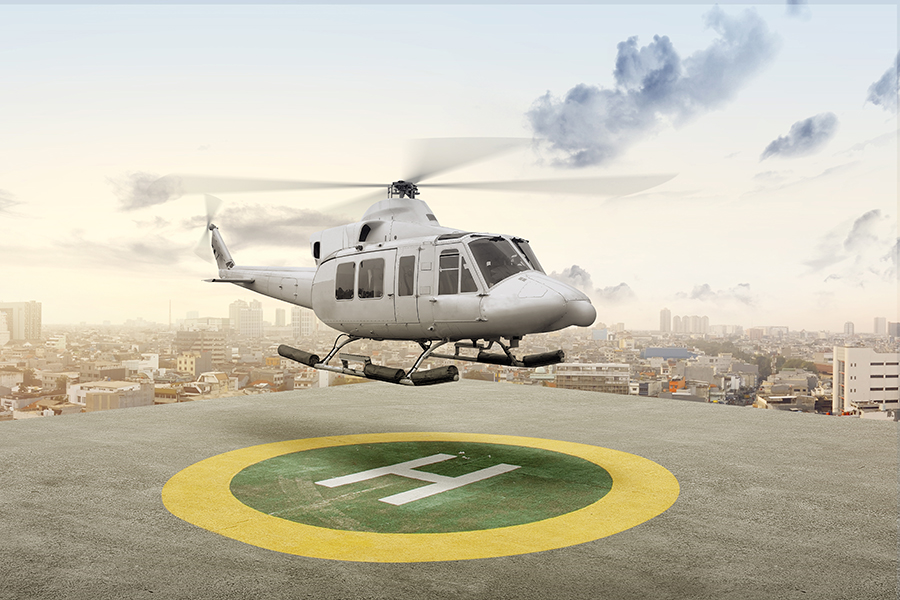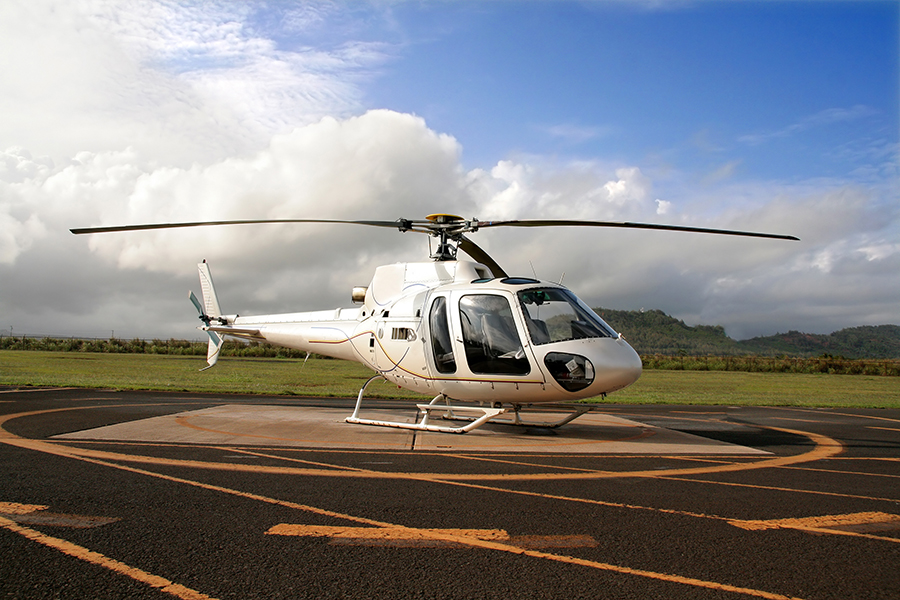-
How Lift Is Produced In Helicopters – The Phenomenon Of Flapback
-
Other Factors Limiting A Helicopter's Forward Speed – Airflow Reversal
-
Point At Which Lift Is No Longer Produced - Retreating Blade Stall
-
Another Factor Limiting High-Speed Helicopter Flight – Air Compressibility
-
A Summary Of The Factors Affecting A Helicopter's Maximum Speed
-
Conclusion
Helicopters can do many things that fixed-wing aircraft cannot; they can hover, turn on the spot, and land almost anywhere. Indeed, to the uninitiated, these amazing rotary aircraft seem to be able to do practically anything at all. But this is not quite true. One thing that they just cannot do is fly really fast.
Even the speediest helicopters move comparatively slowly compared to their fixed-wing equivalents, and there is no helicopter equivalent to the airliner crossing continents at speeds approaching Mach 1 – the speed of sound. At a European air show on August 6th, 1986, a slightly modified version of the ZB500 G-Lynx helicopter, manufactured by GKN Westland Helicopters, set a world speed record for a helicopter by flying at 217.5 knots, and the theoretical top speed for a rotary-winged aircraft is only about 225 knots.
So why is this? Why is there no record-breaking helicopter so far as speed records are concerned, and most probably never will be? It is all ultimately to do with the fact that a helicopter has rotating wings. To really understand the reasons, we need to take a look at some basic helicopter aerodynamics. So we’ll do that now – but please don’t panic! It isn’t as complicated as it sounds…
How Lift Is Produced In Helicopters – The Phenomenon Of Flapback
It is the helicopter’s spinning rotor blades that produce lift and enable the helicopter to fly, and these each produce an equal amount of lift in a hover in still air. But once there is any wind at all, or the helicopter moves forward, the Advancing Blade (the forward-moving one) has more air blowing over it – ie a higher airspeed – than the Retreating Blade (the backward moving one), and therefore produces more lift.
To counteract this dissymmetry of lift between the blades, we allow the blades to flap up and down, and this flapping equalizes the lift across the rotor disc as the blades ‘flap to equality’. But a side effect of this flapping is that when the cyclic is moved forward to increase speed, the rotor disc tilts forward initially but then flaps back, and further forward cyclic movement is required in order to continue to accelerate. This is known as ‘Flapback’.
This phenomenon of ‘Flapback’ occurs throughout the whole speed range of the helicopter. So if we want to increase our speed, the cyclic has to be moved progressively further and further forward. Strictly speaking, there will come a point at which the cyclic is on its forward limit, and the helicopter cannot fly any more quickly.
However, in practice, there are other factors apart from Flapback that are likely to play a part in limiting the helicopter’s forward speed, before this occurs. We will take a look at those now.
Other Factors Limiting A Helicopter’s Forward Speed – Airflow Reversal
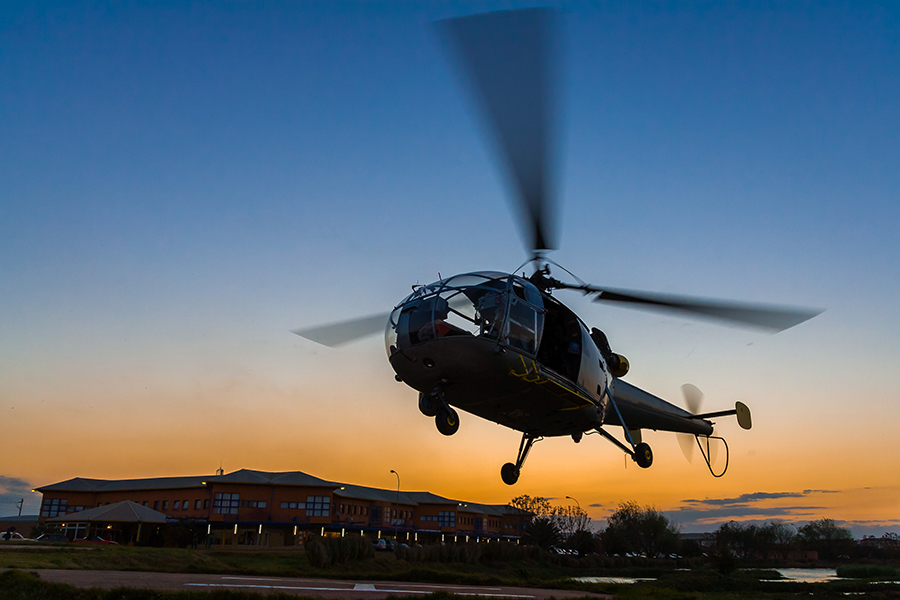
As the helicopter flies faster and faster, there is a progressively increasing difference in the relative velocities of the advancing and retreating blades. To understand this, let’s put in some numbers. If the helicopter is moving forward at 30 knots, assuming no wind, the difference between the airspeed of the advancing blade and the retreating one is 60 knots. But if the helicopter is moving at 150 knots, this difference becomes 300 knots! Now, there comes a point at which the root of the retreating blade, which is the slowest part, has zero airspeeds since the helicopter is moving forward at a faster speed than that section of the blade is rotating. When that occurs, this particular section of the rotor blade cannot produce any lift.
At first, this inability to produce any lift only happens over a small area of the blade. But, as the helicopter speeds up, this ‘Airflow Reversal’ takes place over a larger and larger area of the retreating blade. The only way the rotor system can compensate for this is for the outer part of the retreating blade to work harder, as it were. So the outer section of the blade has to produce more rotor thrust (lift), and it does this by operating at a higher and higher angle of attack, which is achieved through more flapping. Although it doesn’t sound terribly efficient, the helicopter can operate quite happily in this condition, and tests have shown that some helicopters at maximum forward speed have 40% of the retreating blade affected by reverse flow.
Point At Which Lift Is No Longer Produced – Retreating Blade Stall
However, this process of airflow reversal can only continue up to a certain point. As with any aerofoil, if the angle of attack increases beyond a certain point, the blade will stall. This phenomenon is known, perhaps unsurprisingly, as ‘Retreating Blade Stall’. It starts at the tip of the blade, since this is the area that has the highest angle of attack, and spreads inwards to the root. And, basically, the retreating blade ceases to produce any more lift, as would occur with any stalled ‘wing’.
When this retreating blade stall occurs, you might expect the helicopter to roll to the retreating blade side. But in fact, gyroscopic precession means that the effect of the stalled blade occurs 90 degrees later, ie at the rear of the rotor disc. Therefore the helicopter pitches nose up, then rolls to one side or the other, quite arbitrarily.
As with any stall, however, there are symptoms that occur before the retreating blade stall actually happens. Retreating blade stall is heralded by vibration and rotor roughness. But since most pilots have not experienced the phenomenon before, or at least very rarely, the symptoms may go unrecognized. However, as the retreating blade starts to stall and the helicopter pitches its nose up, this in itself will slow the helicopter down, and it may correct the problem before the result becomes catastrophic. If the pilot does actually recognize what is happening, he or she should lower the collective to decrease the blade pitch angles. Aft cyclic, which would raise the nose of the helicopter further, might sound as though it would save the day by slowing down the aircraft, but in fact, it ends up increasing the angle of attack of the blades…for aerodynamic reasons far, far too complicated for the scope of this article – and I hope I haven’t lost you already anyway! However, once the collective has been lowered, then aft cyclic can be used to slow the helicopter down.
Theoretically, increasing the rotor rpm should also provide a means of recovering from retreating blade stall, since it provides more airflow over the blades and therefore limits the size of the reverse flow area. But only small variations in rotor rpm are possible without damaging some part of the helicopter, so this is somewhat academic. Recovering from retreating blade stall by wrecking your rotor system due to a catastrophic over-speed is really not recommended!
You might think that retreating blade stall would never happen unless the pilot is thoroughly misusing his or her helicopter and operating way beyond Vne – the never exceed the speed of the helicopter. But it can also occur during aggressive maneuvers such as steep turns and pulling out of high-speed dives, excessive or abrupt control movements, or flight in turbulence. It is most likely to happen if any of these conditions are combined with flight at a high-density altitude when there is less airflow over the rotor blades in any case. For this reason, it is a good idea for pilots to be aware of the possibility of retreating blade stall, and the symptoms and corrective action to be taken. But don’t worry too much about this, unless you regularly fly in turbulent conditions at high altitudes, and/or push your helicopter to its limits. Retreating blade stall is nothing as common as stalling in a fixed-wing aircraft, very far from it. Indeed, in normal circumstances, it rarely happens. It is perhaps only military pilots, who of necessity must push their machines to their limits, who encounter it. I could only find one incident of retreating blade stall related in the literature – of a test pilot and crew who were investigating airspeed reductions with altitude, who encountered retreating blade stall at 11,000 feet and an indicated airspeed of 46 knots (but much higher true airspeed, of course). Apparently, the helicopter went completely out of control and completed two barrel rolls so large that at the end of the second one it collided with the ground. Miraculously, the pilot and one crew member survived. Scary stuff of course! But this is not a situation in which the average Private Helicopter Pilot – or even a normal Commercial Helicopter Pilot – is ever likely to find themselves.
Another Factor Limiting High-Speed Helicopter Flight – Air Compressibility
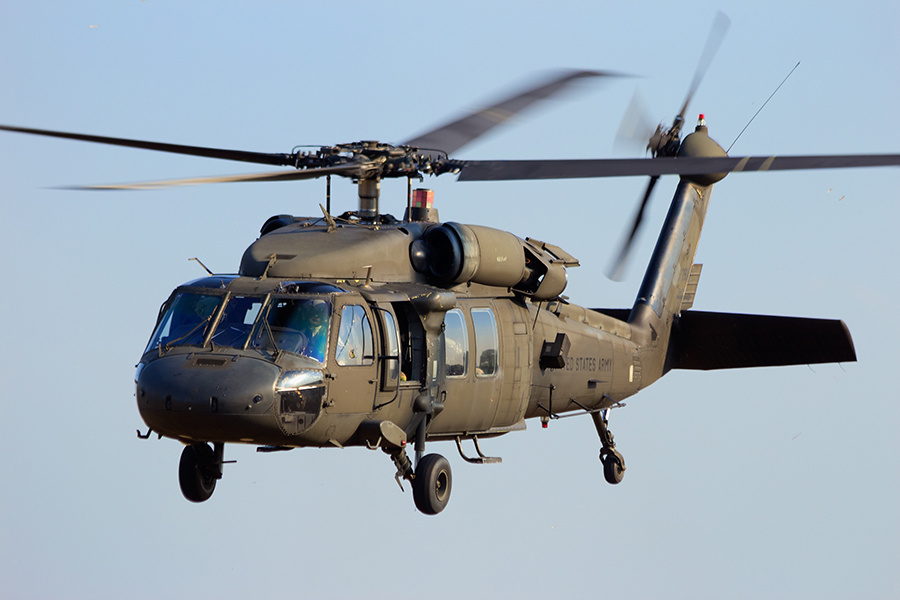
Limits of forward cyclic movement, airflow reversal, and retreating blade stall are not the only factors that limit high-speed helicopter flight. Another factor is Air Compressibility. At high relative airspeeds approaching the speed of sound, the character of the airflow is changed, and compressibility must be taken into account. The helicopter may not be moving at anything approaching this sort of speed, but its rotor blades certainly are, and in this case, it is the speed of the advancing blade that can cause problems. In forward flight at 150 knots, the advancing blade tip of a typical turbine helicopter has a speed of around 295 meters per sec, very close to the speed of sound at sea level, which is 340 meters per sec. This means that compressibility is significant, which means that more power is required for the same rotor thrust, and shock waves may be produced with increasing vibration and noise. Again, this is not a recommended situation to get yourself into when you are flying a helicopter!
A Summary Of The Factors Affecting A Helicopter’s Maximum Speed
In case you’re feeling lost by now, let us summarize the aerodynamic factors that limit a helicopter’s speed, so that if you wish you can study them in more detail at a later date…
- Flapback and the limit of forward cyclic movement
- Airflow reversal
- Retreating blade stall
- Air compressibility
All of these together combine to produce an absolute limit to the speed at which a helicopter can fly, and mean that even the fastest helicopters will never reach the high speeds of the quickest fixed-wing aircraft.
Conclusion
The details of the above explanation may still be somewhat confusing. But to explain it simply, if you get beyond a certain forward speed in a helicopter, your retreating blade suffers from the effects of too low an airspeed, while the advancing blade has problems because its airspeed is too high. If you got lost in the detail explained above, that is actually just about all I was trying to explain. So it should be quite clear now just why there are no super-fast helicopters, and probably never will be. These are not machines for the aviation speed addicts amongst us. But after all, when you can do so many other wonderful things with your rotary machine, who needs to go fast?

